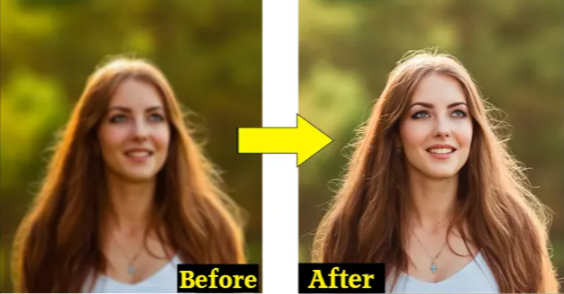In today’s digital age, a groundbreaking tool is changing how one enhances and fixes images: the AI image filler. This technology is a game-changer, making the process of improving pictures easier and more effective.
Understanding AI Image Filling
AI image filling is a modern technology that uses artificial intelligence to fix or fill in parts of an image that are missing or damaged. Think about an old torn photo or a new one with things you don’t want. Artificial intelligence image fillers can fix these issues smoothly. They look at the parts of the image around the damage and make new content that matches to fill in the gaps.
This technology is built on complex algorithms and deep learning. These systems learn from lots of images, understanding patterns and textures. When they see a new image, the AI guesses what should be in the missing parts, thinking about color, light, and texture. This makes the final image look natural and as if it was never changed.
The Benefits of Using Artificial Intelligence Image Fillers
Using artificial intelligence image fillers has many benefits. First, it saves time. Traditional image editing can take hours, but AI can do it in minutes. This is great for professionals who need to work fast. Second, it’s easy to use. Even if you’re not a pro at photo editing, you can still get great results with AI.
Another big plus is the quality of the results. Artificial intelligence image fillers can often fix photos in natural ways, which is hard to do by hand. Also, they’re always getting better. As AI learns from more images, it gets smarter and produces even better results.
Adobe states, “Use Generative Fill to create dozens of high-quality concepts quickly with results only a few keystrokes away.”
How Artificial Intelligence Image Fillers Work
To understand how artificial intelligence image fillers work, consider how one learns to recognize objects. Just like a person learns to identify things by seeing many examples, AI learns from many images. It uses this knowledge to determine what’s missing in a new image. The AI looks at the context – the colors, shapes, and textures around the missing part – and uses this info to create a matching piece.
This process involves a lot of calculations and smart guessing. The AI might look at thousands of images of skies to figure out how to fill in a missing piece of sky in a photo. It’s not just guessing; it’s making an educated guess based on much learning.
Applications of AI Image Filling
AI image filling isn’t just for fixing old photos. It’s also used in many other ways. For example, in the design world, it helps create images that look real but are partly made by AI. This is great for making ads, product images, or even art.
In the film and gaming industries, AI image filling is used to create realistic backgrounds and scenes. This saves time and money because they don’t have to build everything for real. It’s also used in surveillance and security, where it can help reconstruct unclear or damaged images.
The Future of AI Image Filling
The future of AI image filling is exciting. As AI improves, one will see even more amazing uses. It could help restore historical photos, making them look new again. It could also help in science, for example, by filling in missing parts of images taken by space telescopes.
Another exciting possibility is using AI image filling in virtual reality (VR) and augmented reality (AR). It could create realistic environments for games or simulations. This would make VR and AR experiences even more immersive and exciting.
Artificial intelligence image filler technology is a powerful tool that changes how one works with images. It’s fast, easy to use, and keeps getting better. From fixing old photos to creating new worlds in VR, AI image-filling is a technology that’s here to stay and will continue to amaze people with its capabilities.
